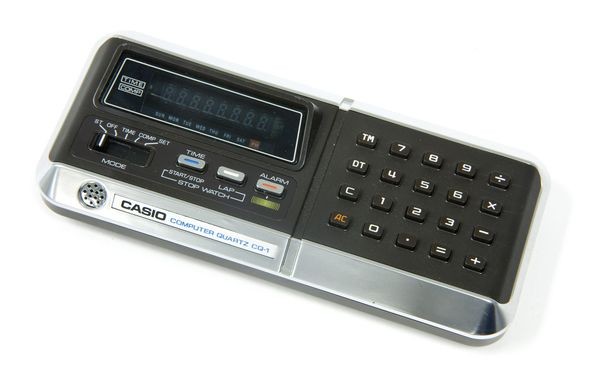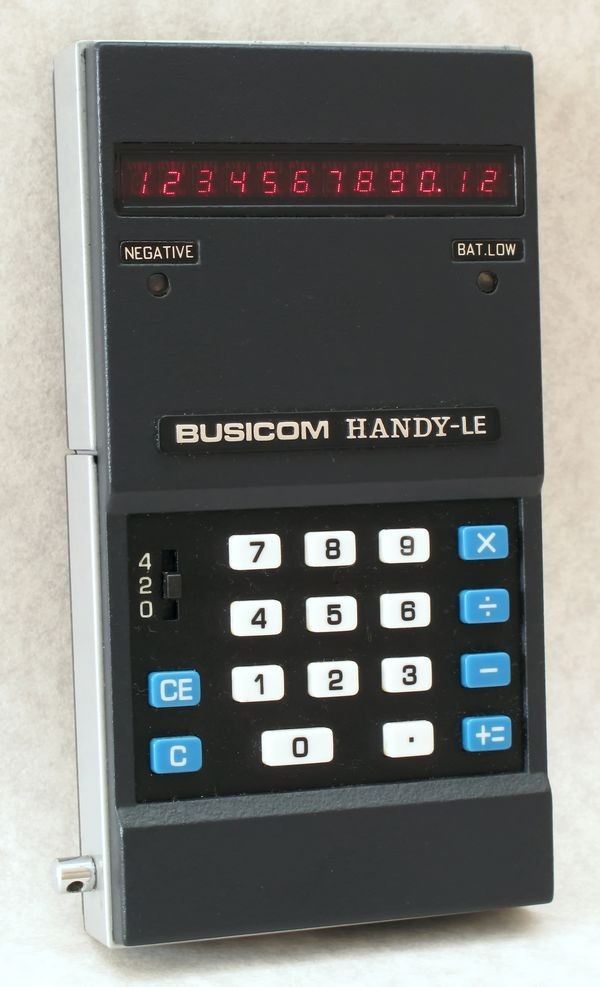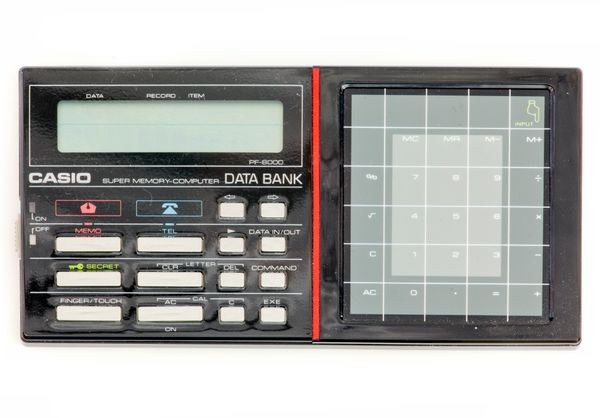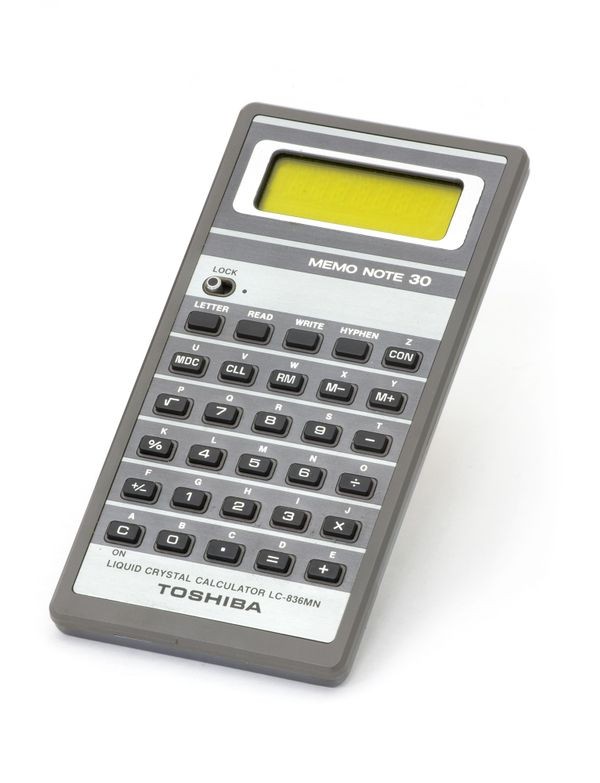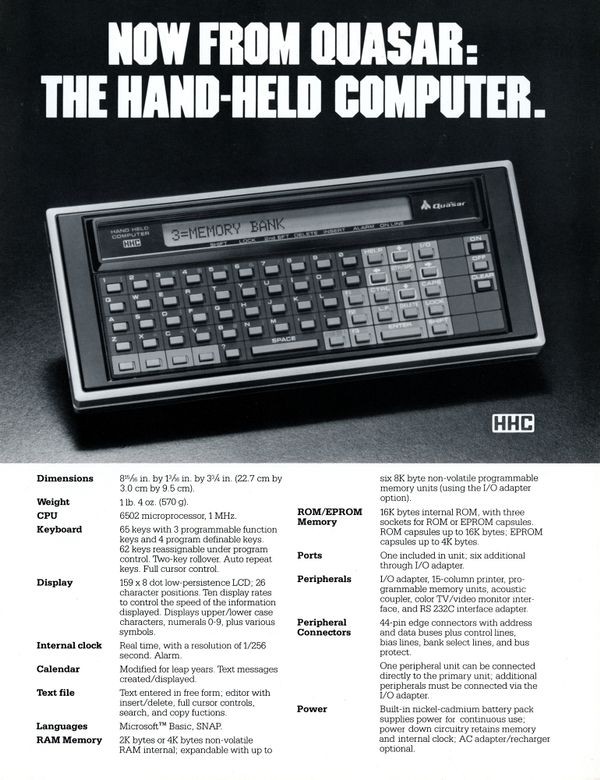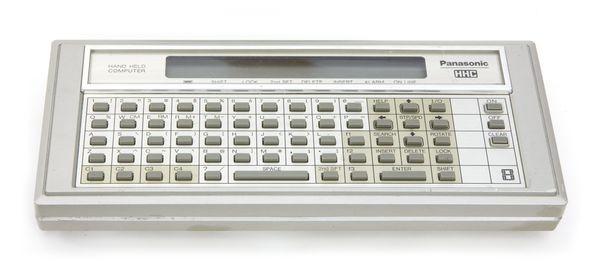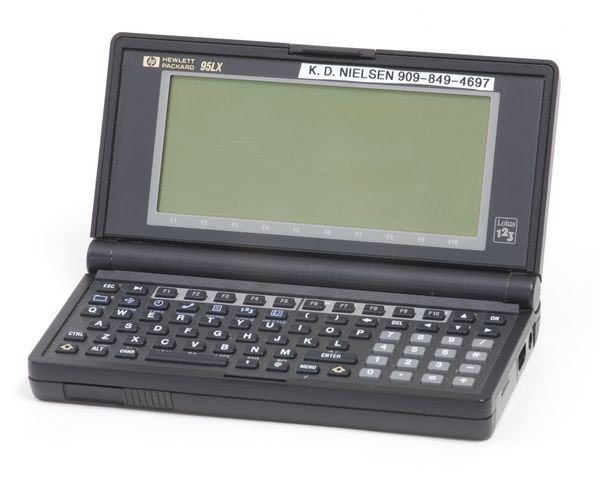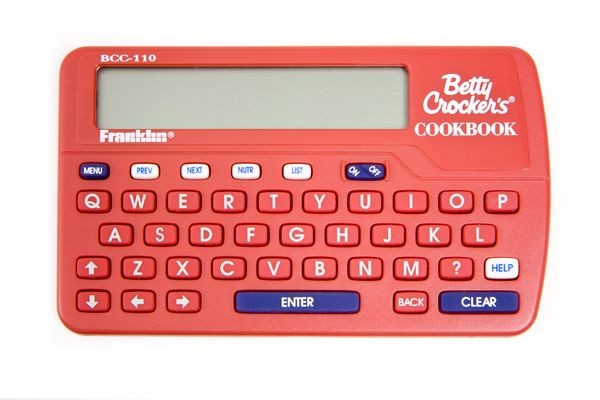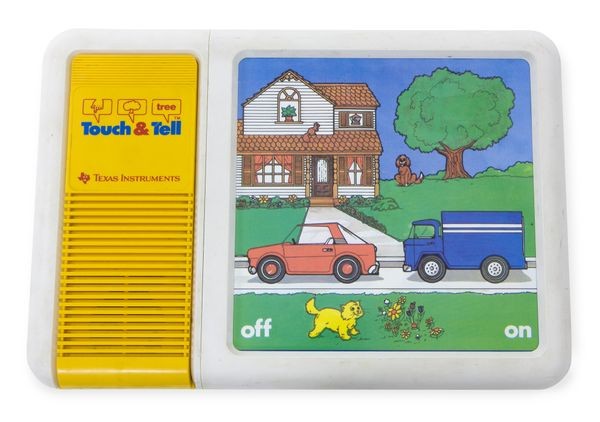Handhelds & Tablets
CQ-1 calculator
The Casio CQ-1 was a calculator on its way to becoming a handheld organizer. It had clock, alarm and scheduler features.
Handhelds & Tablets
Handheld computers are the offspring of early personal electronic organizers with calendars and address lists. Organizers, in turn, had been inspired by earlier electronic handheld calculators such as the Busicom “Handy.”
Tablets—with roots in both handhelds and laptops—usually have a touch or pen-operated screen. Initially successful mostly in specialized markets, such as warehouse management, they have moved into the mainstream.
Busicom Handy LE-120A calculator
The Busicom was one of the very first truly pocket-sized electronic calculators. These brought together all the needed components for later handheld computers; processor, display, keys, battery, and memory.
View Artifact DetailElectronic Diary patent
In 1975, Satyan (“Sam”) Pitroda, an inventor and pioneer of India’s communication revolution, filed a patent for an electronic diary that could track appointments and remind the user of upcoming events with alarm messages.
View Artifact DetailPsion Organiser
The first Psions looked like calculators, but were full computers and launched a successful line of handhelds, selling over a million units. Third party developers produced a rich variety of software.
View Artifact DetailPF-8000 handheld computer
This “data bank” calculator might have been the first that had a pen-based interface and did simple character recognition.
View Artifact DetailLC-836 Memo Note 30
This was one of the first handheld computers with a phone directory and a notepad. Toshiba licensed the patent for an “Electronic Pocket Directory” from an independent inventor after printed organizer company Rolodex showed no interest.
View Artifact DetailMartin Riddiford: The Psion Organiser II Interface
Chapter Menu
1. Psion Organizer 2
2. Series 5
Handhelds: Defining Their Role
Full-sized portable computers always had a clear and general purpose: being a desktop computer on the go. But general-purpose handhelds were initially too limited for anything but niche markets such as inventory management.
Handhelds specialized for a particular function—such as calendar, address book, or cookbook—were more successful.
Quasar Hand-Held Computer advertisement
The Panasonic/Quasar Hand-Held Computers offered a full line of miniature peripherals, including a printer, modem, video-out adapter, extra memory modules and more. All fit in a single briefcase.
View Artifact DetailCompact Computer 40
The attractive CC-40 was TI’s first foray into the mobile computing market. Sales were slow, partly because there was no easy way to export data. It ran for 200 hours on AA batteries.
View Artifact DetailRL-H1000 Hand-Held Computer
These Hand-Held Computers were much bigger than a hand. But they were general-purpose computers, not limited-function organizers. Quasar and Panasonic offered nearly identical models under different branding.
View Artifact DetailHP 95LX, Palmtop Computer
HP’s LX series was a successful example of a handheld computer that ran MS-DOS, the most common operating system for IBM PCs until the early 1990s.
View Artifact DetailDedicated Devices
Betty Crocker cookbook
Consumer electronics companies produced a multitude of inexpensive dedicated handheld devices for games, language translators, cookbooks and more.
View Artifact DetailTouch & Tell educational game
A follow-on to Speak & Spell, Touch & Tell used a synthetic voice to ask children questions. Kids pointed to the answer on the screen.
View Artifact DetailLK-3000 Handheld with program cartridges
Lexicon software cartridge applications ranged from language translators, to memo pads, to organizers. Third party developers could produce new applications, as they do now for phones—but only one could run at a time.
View Artifact Detail